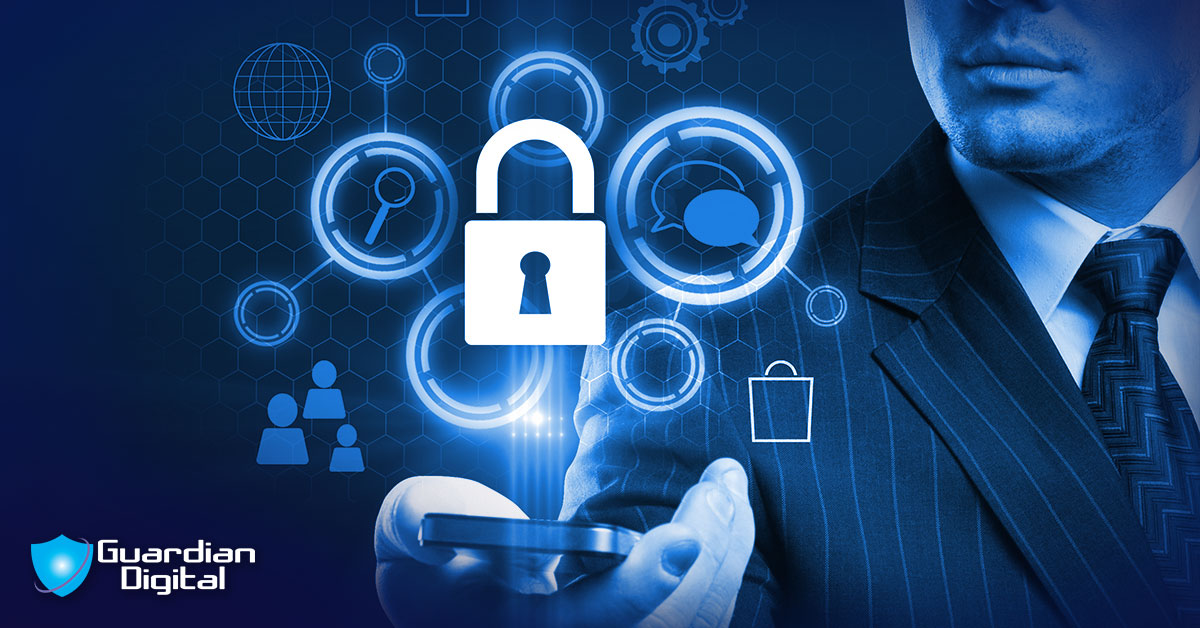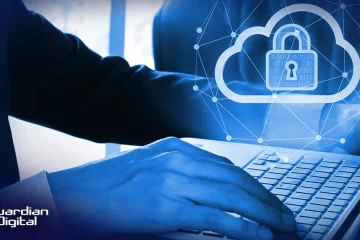Hey there! Feeling confident in your organization’s ability to fend off cyber threats? Ever wondered if your current security measures are up to par? Picture this: you’re going about your IT routine, thinking everything’s fine, only to stumble upon a sneaky vulnerability you hadn’t caught before! That’s where cybersecurity audits come in: they uncover those hidden weak spots, ensure you’re meeting compliance standards, and keep your business humming along smoothly.
By thoroughly assessing your organization’s information systems, networks, and processes for potential vulnerabilities that cybercriminals could exploit, you get to put on your attacker hat and spot security gaps before they get exploited. Many businesses opt for quarterly cybersecurity audits to stay ahead in this cat-and-mouse game.
In this article, we’ll dive deep into cybersecurity audits, focusing on actionable steps you can take to evaluate and enhance your security. Email security is a crucial aspect of these comprehensive IT evaluations, and this guide is here to help you set clear audit goals, tackle common challenges effectively, and beef up your security measures.
Ready to amp up your cybersecurity and take real steps against attacks and data breaches? Let’s dive into everything you need to know for a successful security audit from start to finish.
What Is a Cybersecurity Audit & Why Is It Critical for a Robust Security Posture?
 A cybersecurity audit objectively assesses an organization’s information systems and security measures. Its aim? To gauge the effectiveness of cybersecurity practices, spot vulnerabilities, meet regulations, and shield against potential threats. This evaluation typically covers network protection assessments, threat management protocols, and information security policy audits.
A cybersecurity audit objectively assesses an organization’s information systems and security measures. Its aim? To gauge the effectiveness of cybersecurity practices, spot vulnerabilities, meet regulations, and shield against potential threats. This evaluation typically covers network protection assessments, threat management protocols, and information security policy audits.
Boosting your security helps build and maintain trust with customers, partners, and stakeholders who prefer businesses with strong cybersecurity measures. Plus, investing in robust cyber defenses helps businesses cut down on operational disruptions caused by cyber incidents, ensuring business continuity and avoiding downtime due to cybersecurity mishaps.
Understanding the Steps in a Cybersecurity Audit
Embarking on a cybersecurity audit might seem daunting at first, but breaking it down into manageable steps makes the process less overwhelming. Start by defining your audit’s scope, pinpointing the networks, systems, applications, and data storage that need assessing. Your IT teams and top brass must collaborate to grasp why this audit is crucial for your goals: compliance or vulnerability identification. Clear objectives set the audit’s course more easily.
Once your scope is set, gather an inventory of IT assets and understand their interactions – from hardware and software setups to user access controls and risk assessments. Analyze high-risk areas where vulnerabilities lurk, with a focus on prioritizing those with severe consequences if compromised. A detailed checklist covering every aspect of the cybersecurity framework will be your ally here. During the audit, collect evidence, analyze findings meticulously, document results thoroughly, and craft an actionable improvement plan based on this intel.
Transform audit findings into actionable steps by ranking them by risk levels and crafting an action plan with clear timelines for addressing each issue. Delegate tasks to team members and schedule regular check-ins to track progress. Keep security policies and procedures updated to stay ahead of emerging threats. Regularly review your audit history to gauge success and plan for follow-up reviews to stay vigilant and adjust for new threats. Keeping an eye on pending regulatory actions with follow-up reviews in mind strengthens defenses and builds stakeholders’ trust. By responding to audit results methodically, you fortify your defenses and earn customer confidence.
Defining the Purpose & Scope of a Cybersecurity Audit
 Before you dive into a cybersecurity audit, set clear objectives. Are you aiming to pinpoint vulnerabilities or ensure compliance? Gather input from key stakeholders to align expectations. Draft an audit plan detailing everything to be assessed – hardware, software, networks, user access controls – and prioritize high-risk areas so your efforts hit where they matter most. Define your audit’s boundaries by outlining what’s included and excluded, ensuring you have resources and a realistic timeline.
Before you dive into a cybersecurity audit, set clear objectives. Are you aiming to pinpoint vulnerabilities or ensure compliance? Gather input from key stakeholders to align expectations. Draft an audit plan detailing everything to be assessed – hardware, software, networks, user access controls – and prioritize high-risk areas so your efforts hit where they matter most. Define your audit’s boundaries by outlining what’s included and excluded, ensuring you have resources and a realistic timeline.
To prevent scope creep, document and approve your scope before checking in regularly with the team. Use a formal change-management process if scope changes are necessary. Take an evidence-based approach to critical areas, breaking the audit into smaller chunks for easier management. Maintain open communication among all parties to tackle issues promptly and keep things on track – this ensures your cybersecurity audit stays thorough yet manageable without spiraling out of control.
Challenges and Pitfalls of Cybersecurity Audits
While cybersecurity audits offer valuable insights, they also come with unique challenges and pitfalls to dodge. Scope creep is a major hazard, where audits stray beyond their initial plans, leading to resource strain, extended timelines, and incomplete coverage. Setting a manageable scope from the get-go is crucial for effective auditing results.
Another challenge lies in limited resources. Insufficient budget or skilled personnel can hamper the depth and effectiveness of an audit. Proper resource allocation is key to navigating challenges in cybersecurity auditing projects. Planning and allocation are vital for managing these hurdles successfully.
projects. Planning and allocation are vital for managing these hurdles successfully.
Resistance to changes recommended by an audit can come from employees and stakeholders, making effective communication, education, and leadership support crucial to underline the importance of cybersecurity enhancements and overcome resistance. Inaccurate or incomplete data collection could compromise an audit’s integrity, so auditors must have access to all relevant systems and info for thorough analyses.
Handling vast audit findings and responding effectively can be a challenge. Categorize findings by risk levels and tackle high-priority items first. Organizations mustn’t mistake compliance for security – they need to meet regulatory standards while implementing robust security measures separately.
Consider the ever-evolving cybersecurity landscape with frequent new threats, requiring audits to anticipate risks and adapt security measures accordingly. Failing to act on audit findings could render them useless. Create an action plan, check progress regularly, and stay compliant.
Beware of Third-Party Risks
Evaluating third-party risks can be complex for businesses relying on external vendors and partners, requiring careful collaboration. Ensuring these third parties uphold strong cybersecurity practices demands attention from all parties involved.
Follow-Up & Improvement
After your cybersecurity audit, the real work begins: addressing findings and implementing recommendations. Prioritize findings based on risk levels, focusing on critical issues that could cause severe damage if left unattended. Detail an improvement plan assigning tasks and deadlines to ensure everyone knows their role in addressing vulnerabilities.
Regular progress checks are vital to maintain momentum. Schedule check-ins to assess improvements, adjust as needed, hold team members accountable, document progress, and keep communication open. Act promptly on audit findings to bolster your security while reducing the risk of future breaches.
Best Practices for Conducting Cybersecurity Audits
When prepping for a cybersecurity audit, start by outlining your goals clearly. Are you aiming to identify system vulnerabilities, verify regulatory compliance, or both? Setting these expectations upfront is crucial for all key stakeholders, like executives and IT staff, to understand the audit’s direction. Clear objectives guide your audit’s trajectory.
 Next, craft a comprehensive audit plan by creating a detailed checklist covering hardware, software, networks, and user access controls. Prioritize high-risk areas to address pressing issues first. Clearly define your audit’s boundaries, specifying inclusions and exclusions to manage its scope effectively and allocate resources like skilled personnel, budget, and tools before setting achievable timelines for each audit phase to prevent unnecessary delays.
Next, craft a comprehensive audit plan by creating a detailed checklist covering hardware, software, networks, and user access controls. Prioritize high-risk areas to address pressing issues first. Clearly define your audit’s boundaries, specifying inclusions and exclusions to manage its scope effectively and allocate resources like skilled personnel, budget, and tools before setting achievable timelines for each audit phase to prevent unnecessary delays.
To prevent your audit from veering off course, officially document and get approval for the scope from key stakeholders. This document should outline objectives and areas to be audited for maximum impact, preventing unauthorized changes during the audit. Regularly review your scope with the team and stakeholders to thwart scope creep. Use a formal change-management process if unexpected changes arise to control and document everything. Focusing on high-risk areas and breaking the audit into manageable sections ensures thorough coverage while keeping it manageable for you and your audit team. Open communication throughout enables you to swiftly address emerging issues while focusing on critical areas without ballooning costs or spiraling out of control.
Understanding the Role of Email Security in Cybersecurity Audits
Email has long been a linchpin of business communication. It’s also a prime gateway for cyber threats to infiltrate organizations, making email security a vital facet of cybersecurity audits. Phishing attacks remain a top method for cybercriminals to breach systems without authorization, so evaluating email security helps spot vulnerabilities that could lead to future attacks. Emails can also propagate malware and ransomware, so audits should assess an organization’s malware detection and prevention mechanisms. Additionally, emails can inadvertently or purposely leak sensitive info, necessitating periodic checks of data protection controls like encryption, Data Loss Prevention (DLP), or cloud email security solutions.
 Organizations aiming to enhance email security through cybersecurity audits should focus on key areas. Test the effectiveness of email filtering solutions in detecting spam, phishing emails, and malicious attachments, regularly updating them to combat emerging threats. Using encryption protocols safeguards sensitive info transmitted via email, making intercepted emails unreadable to thwart future cyber attacks.
Organizations aiming to enhance email security through cybersecurity audits should focus on key areas. Test the effectiveness of email filtering solutions in detecting spam, phishing emails, and malicious attachments, regularly updating them to combat emerging threats. Using encryption protocols safeguards sensitive info transmitted via email, making intercepted emails unreadable to thwart future cyber attacks.
Evaluating authentication methods like SPF, DKIM, and DMARC verifies the legitimacy of incoming emails. Training employees on email security helps them spot phishing attempts, handle suspicious emails correctly, and adhere to email security policies. Reviewing incident response procedures for email threats – detecting, reporting, and responding to phishing attempts, malware, and data breaches via email – is vital. Auditing email archiving and retention policies and solutions ensures compliance and aids forensic investigations as needed.
Keep Learning About the Importance of Cybersecurity Audits for Businesses
Embarking on a cybersecurity audit is crucial for businesses looking to fortify their security, mitigate risks, and meet compliance standards. By following best practices like defining audit scope, assembling a skilled team, adopting structured frameworks, conducting thorough risk analyses, and prioritizing email security, organizations can assess and bolster their cyber defenses.
Cybersecurity audits present hurdles and pitfalls. Understanding these challenges and taking proactive steps to overcome them ensures successful audits. With cyber threats evolving constantly, businesses can safeguard sensitive data, uphold customer trust, and cultivate resilience against threats by prioritizing cybersecurity audits.
Keep expanding your knowledge on enhancing your business’s cybersecurity posture by exploring the resources below:


